Submitted by WA Contents
Calatrava’s World Trade Center Transportation Hub is going to open to the public in June
United Kingdom Architecture News - May 15, 2015 - 15:27 29704 views
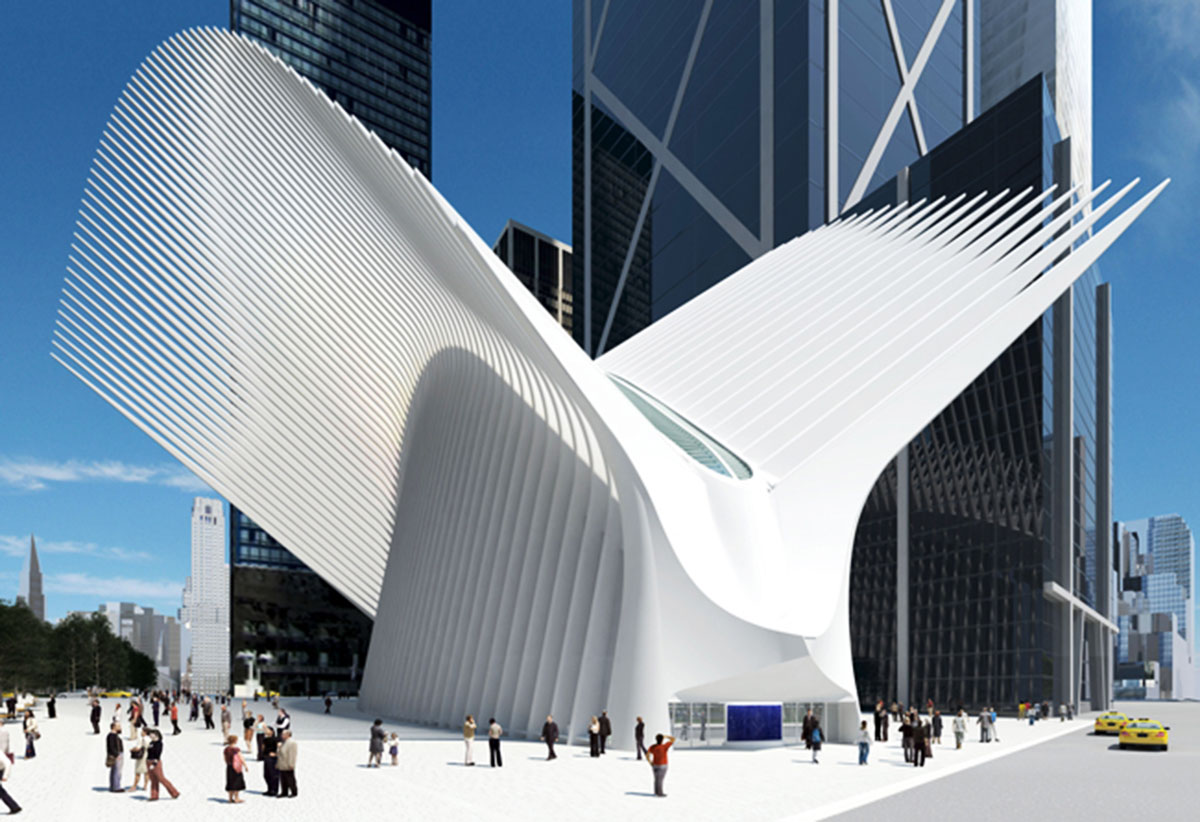
the image is from the Church Street entrance and the wings of the hub, as shown in this rendering, were originally designed to open and close.above photo © James Ewing
all images © Santiago Calatrava Architects&Engineers
In January 2004,Calatrava designed this exotic structure located in lower Manhattan and this modest but spiny design would have been the new World Trade Center Transportation Hub for a new permanent facility with new Calataravian style.This project replaced the original Port Authority Trans-Hudson (PATH) rail system that was destroyed on September 11, 2001.Finally,this tough-looking project is going to open to the public in June, the Times reports after years of delays and setbacks. This tectonically different skeleton seems that it will create a new debates over its speculative $3.9 billion budget as well as its nave cathedral-looking.Then,we share the project details once more just in order to remember its design approach and also reinteroogate its urban setting again.
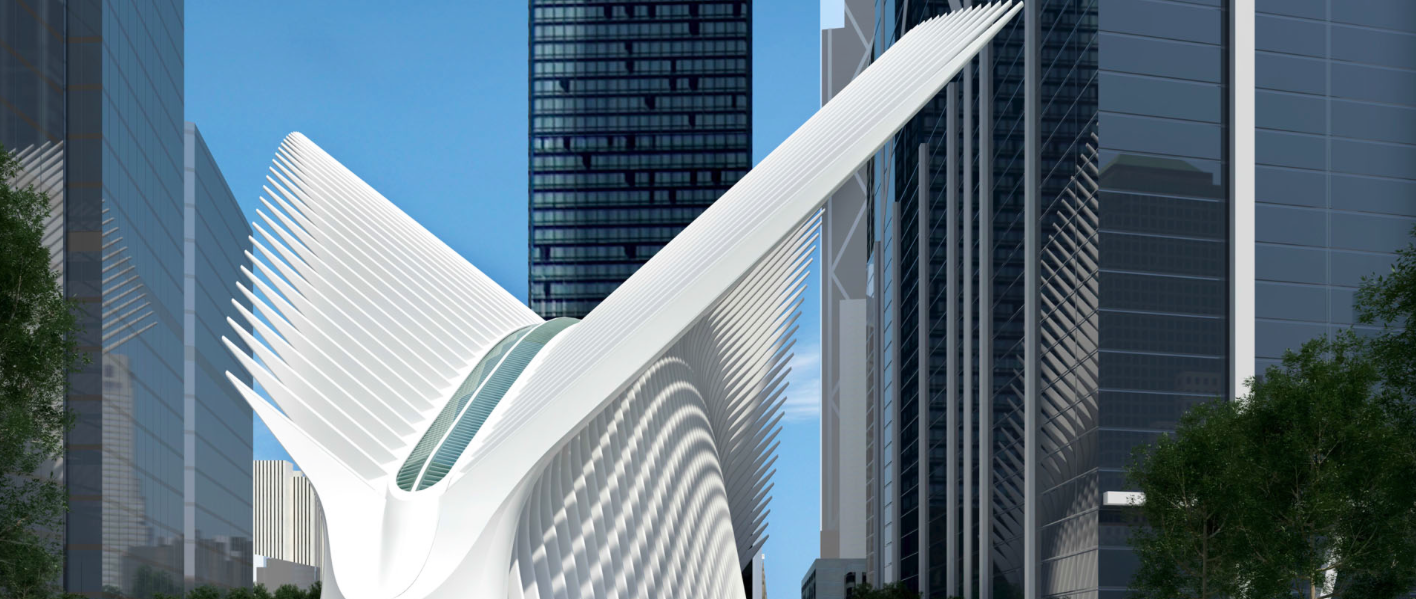
Calatrava's first major design decision for the WTC Transportation Hub was to conceive the building at grade, the 'Oculus', as a free standing structure and situate it along the southern edge of Daniel Libeskind's 'Wedge of Light' plaza. This treatment of the site creates a kind of pause amid the dense commercial towers and links the procession of green spaces extending from City Hall Park to the churchyard of St. Paul's, through the WTC Transportation Hub plaza to the gardens of the Memorial and Battery Park along the Hudson. The 'Oculus' is comprised of steel ribs and glass arrayed in a large elliptical shape. The ribs extend to create two canopies over the north and south portions of the plaza.

The rafters spring from two 350 ft arches flanking the project's central axis. Between the arches, a 330 ft operable skylight frames a slice of the New York sky, and opens on temperate days as well as annually on September 11. Although suggestive of motifs from many traditions (the Byzantine mandorla, the wings of cherubim above the Ark of the Covenant, or the sheltering wings on Egyptian canopic urns), the form may be summed up, according to Santiago Calatrava, by the image of a bird released from a child's hands.

This Oculus allows natural daylight to flood into the WTC Transportation Hub; filtering down through all levels eventually to the PATH train platform, approximately 60 ft below the street. At night, the illuminated building will serve as a lantern in its neighborhood. Santiago Calatrava speaks of light as a structural element in the WTC Transportation Hub, saying that the building is supported by 'columns of light.'

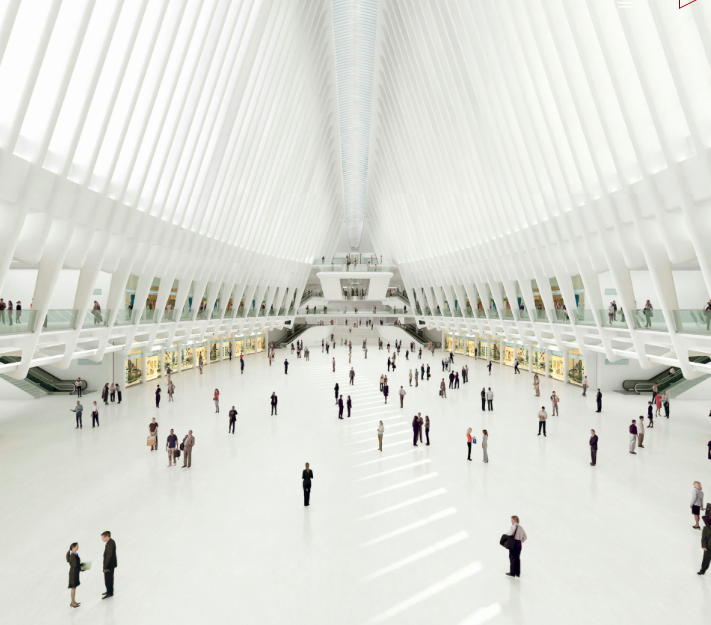
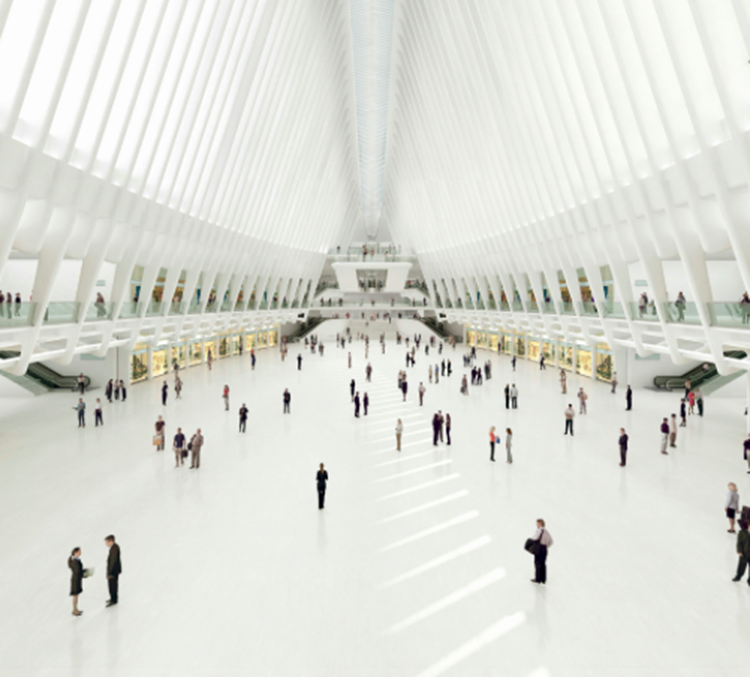
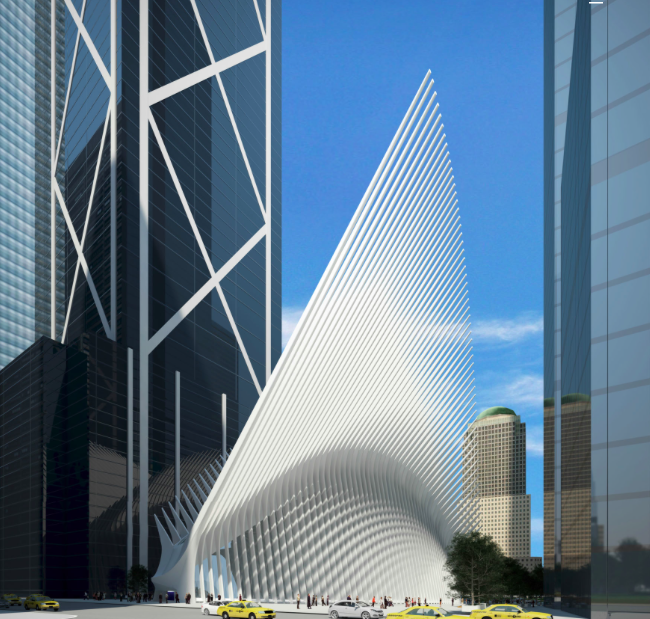
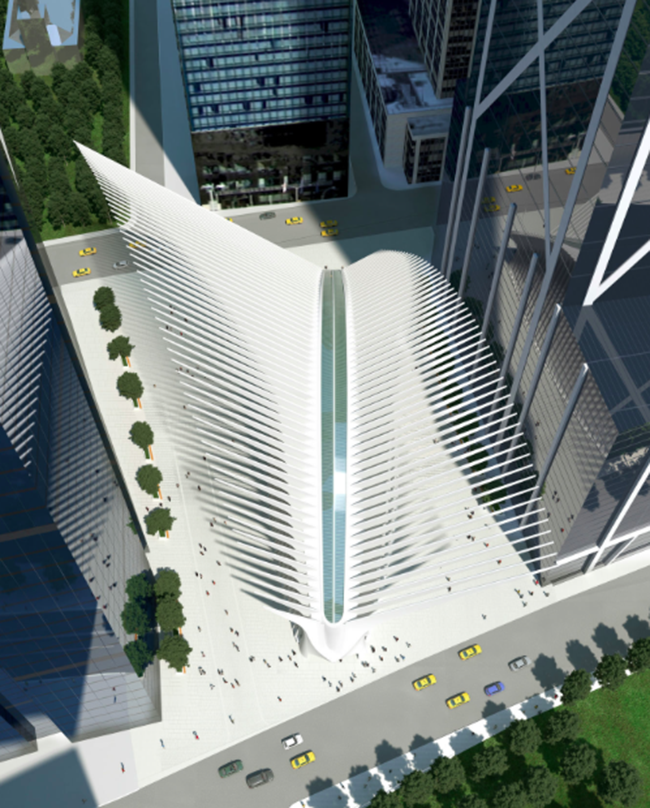
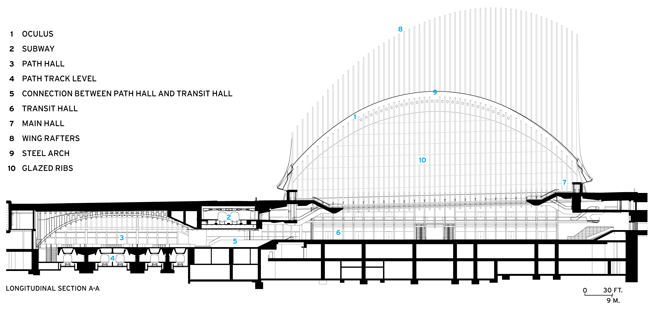

Project Facts
Date: 2003
Location:WTC Transportation Hub, New York, NY 10006, United States
> via Santiago Calatrava Architects&Engineers
